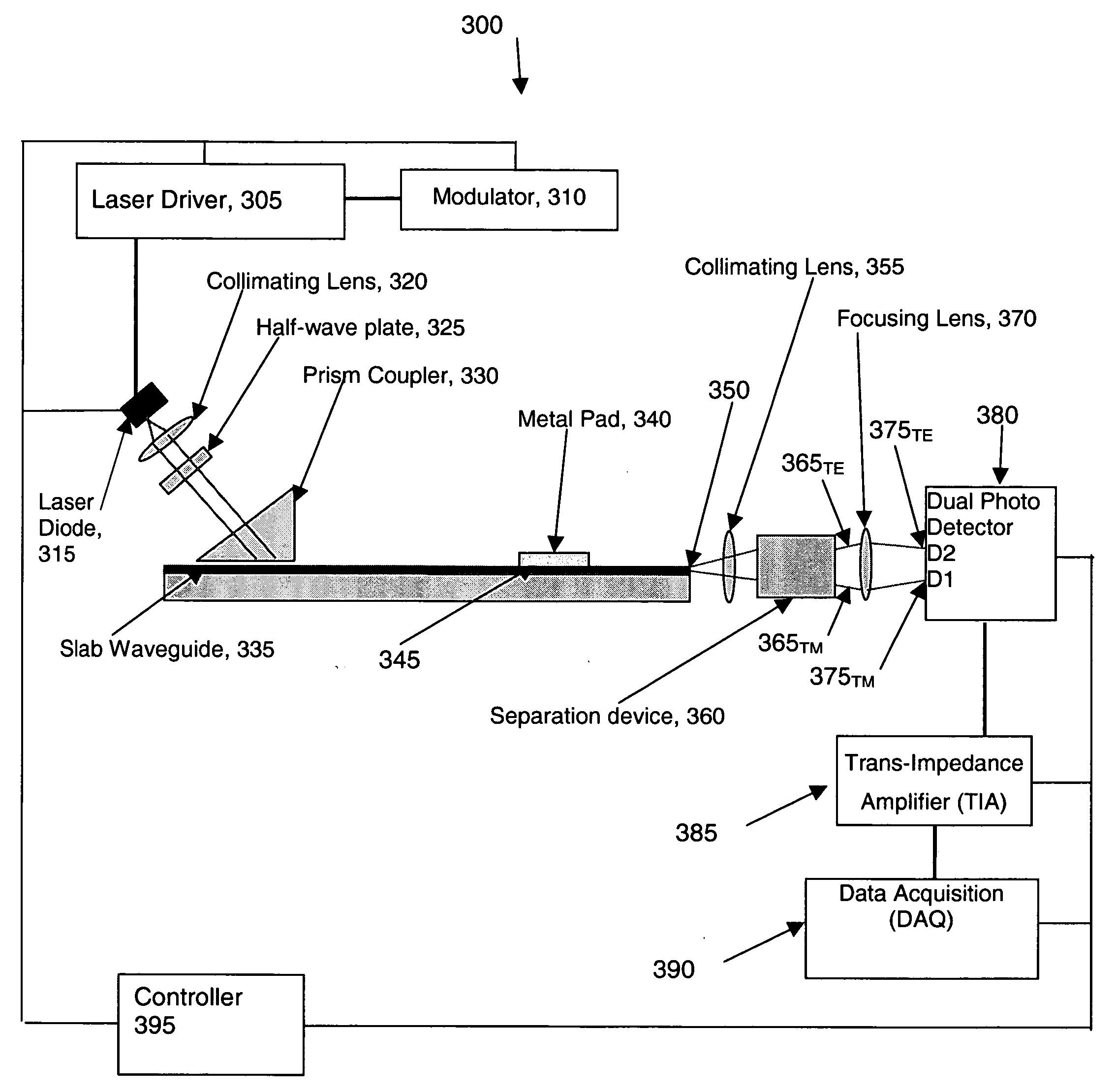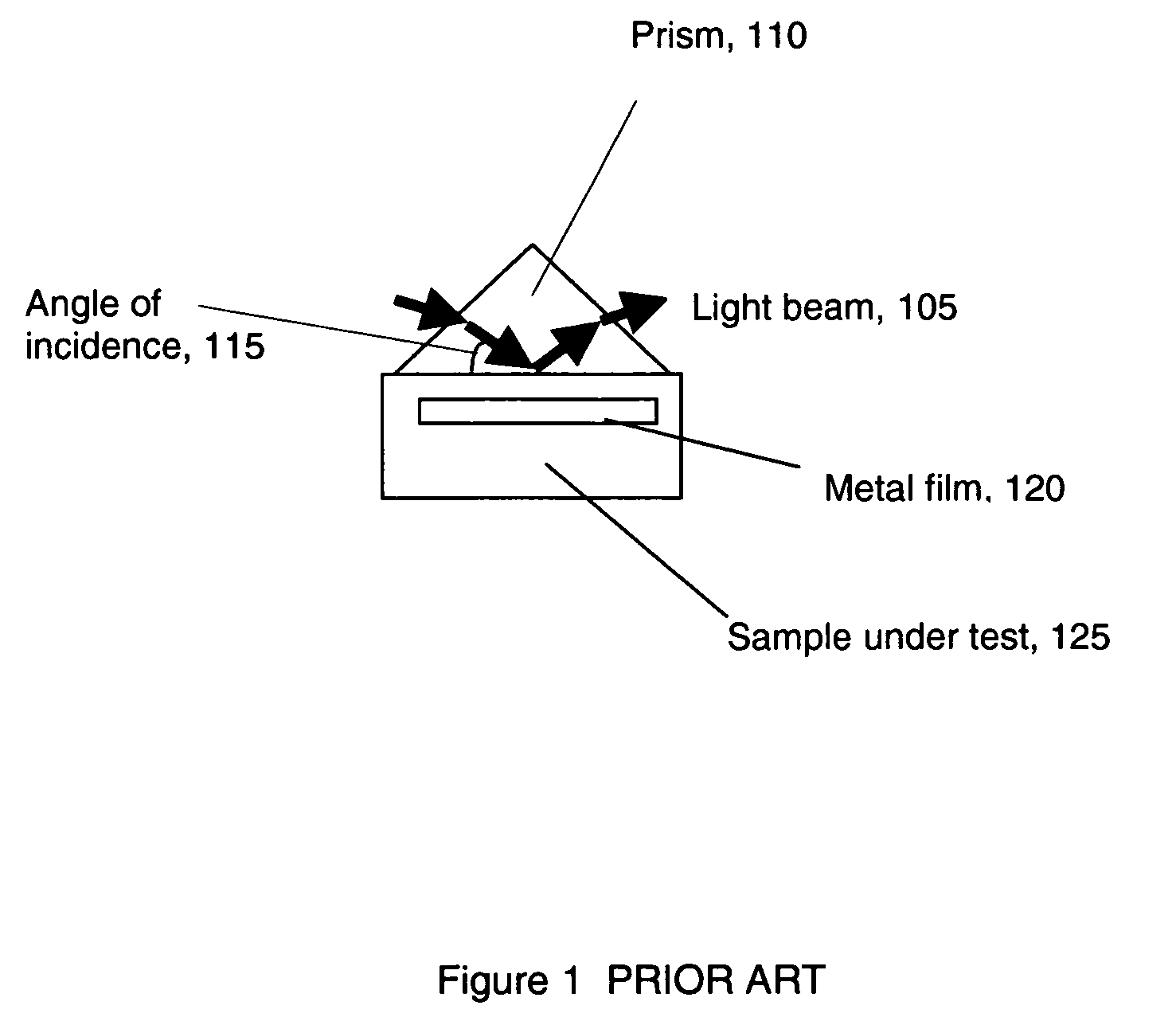High sensitivity optical detection by temperature independent differential polarization surface plasmon resonance
- Summary
- Abstract
- Description
- Claims
- Application Information
AI Technical Summary
Problems solved by technology
Method used
Image
Examples
Embodiment Construction
[0020]FIG. 3 shows a block diagram of a system 200 suitable for practicing the embodiments disclosed herein. Although the presently disclosed embodiments will be described with reference to the drawings, it should be understood that the embodiments may be realized in many alternate forms, utilizing any suitable size, shape or type of elements or materials.
[0021] The disclosed embodiments include an SPR detector based on a slab waveguide design, rather than a set of channel waveguides. The slab waveguide SPR detector design at the very least eliminates the highly precise angle measurement and stabilization required by Kretschmann configurations.
[0022] The disclosed embodiments also include a differential detection scheme based on measuring the instantaneous difference in intensities of transverse magnetic (TM) and transverse electric (TE) polarization modes of a probing light beam. The TM polarized light excites the SPW in the metal film and its transmitted intensity strongly depen...
PUM
 Login to View More
Login to View More Abstract
Description
Claims
Application Information
 Login to View More
Login to View More - R&D
- Intellectual Property
- Life Sciences
- Materials
- Tech Scout
- Unparalleled Data Quality
- Higher Quality Content
- 60% Fewer Hallucinations
Browse by: Latest US Patents, China's latest patents, Technical Efficacy Thesaurus, Application Domain, Technology Topic, Popular Technical Reports.
© 2025 PatSnap. All rights reserved.Legal|Privacy policy|Modern Slavery Act Transparency Statement|Sitemap|About US| Contact US: help@patsnap.com



